Today, the Alliance for the Great Lakes announced our 2020 Great Lakes Federal Policy Priorities. With the support of Congress, the Great Lakes region has made significant progress to protect and restore the lakes. But much more needs to be done. The annual priorities outline our federal policy agenda, and identify the next steps Congress should take this session to protect the lakes.
Read on for a summary of the Great Lakes Federal Policy Priorities. You can also download the full document to read about the priorities in detail.
Prevent Invasive Asian Carp from Reaching the Great Lakes
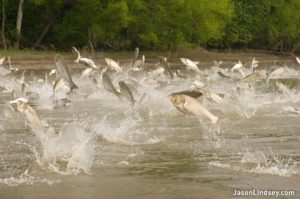
Invasive Asian Carp pose a clear threat to the Great Lakes. And the fish are only 50 miles from Chicago and Lake Michigan. The U.S. Army Corps of Engineers has proposed construction of additional invasive Asian Carp measures at the Brandon Road Lock and Dam, located near Joliet, Illinois. This project has been identified as the best step in stopping the fish from entering the Great Lakes.
We urge Congress to:
- Support full funding and authorization for the construction of the project at Brandon Road Lock and Dam;
- Support funding for ongoing monitoring and containment efforts, such as the electric barrier; and
- Improve operations on the waterways near Chicago to limit the risk of invasive Asian Carp entering the Great Lakes.
Invest to Improve Outdated and Failing Drinking Water Infrastructure and Ensure Access to Safe, Affordable Drinking Water
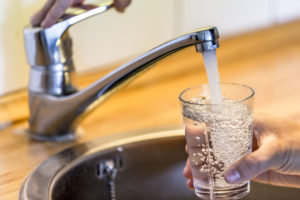
Our nation’s drinking water infrastructure is woefully in need of repair. According to the American Water Works Association, an estimated $1 trillion is needed to repair, replace, and expand drinking water systems over the next two decades. The eight Great Lakes states represent about 24 percent of that need. Low-income households are especially burdened by these costs.
We urge Congress to:
- Increase funding for federal loan programs for state and local governments to repair and replace drinking water infrastructure; and
- Set aside funding in loan and grant programs to support infrastructure needs in financially distressed communities.
Invest in Stronger, More Resilient Communities by Updating Outdated and Failing Wastewater Infrastructure
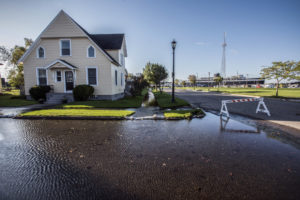
More than 70 percent of all combined sewers, which collect both sewage and stormwater runoff, in the United States are located in the Great Lakes region. Combined sewer overflows during heavy rains lead to raw or poorly treated sewage polluting our lakes. In cities with many paved surfaces and aging stormwater infrastructure, urban flooding and basement backups pose serious health risks and result in significant economic losses. And climate change will make these problems even worse.
We urge Congress to:
- Increase funding for federal loan programs for state and local governments to repair and replace wastewater infrastructure; and
- Support programs to assist financially distressed communities with these costs.
Reauthorize the Great Lakes Restoration Initiative and Provide at Least $350 Million in FY21
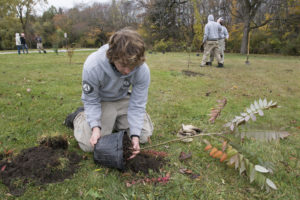
The Great Lakes Restoration Initiative (GLRI) has supported hundreds of on-the-ground restoration projects around the region. The GLRI supports efforts to clean up toxic pollution, restore fish and wildlife habitat, combat invasive species like invasive Asian Carp, and prevent polluted runoff from farms and cities.
We urge Congress to:
- Fund GLRI with at least $350 million in FY21; and
- Support the GLRI Act of 2019, which ensures this critical program can continue.
Uphold Existing Environmental Laws and Restore the U.S. Environmental Protection Agency’s Enforcement Ability
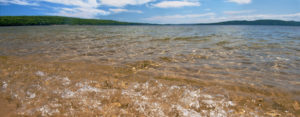
The U.S. Environmental Protection Agency (U.S. EPA) plays the critical federal role in safeguarding the Great Lakes, protecting our public health, and keeping our water safe and clean. Rollbacks of key federal environmental regulations, together with staff cuts, have reduced U.S. EPA’s ability to protect the environment and people’s health, undermined scientific research in government decisions, and reduced U.S. EPA’s capacity to coordinate important regional projects like the GLRI and the Asian Carp Regional Coordinating Committee.
We urge Congress to:
- Restore the U.S. EPA’s Region 5 office, which oversees Great Lakes programs, to the levels necessary to fulfill its duties to protect water for humans and wildlife.
Fund Federal Agencies and Programs That Are Critical to Protect and Restore the Great Lakes
Along with the U.S. EPA, the Clean Water Act, and the GLRI, there are many federal agencies and programs that are vital to successful protection and restoration of the Great Lakes. For example, the National Oceanic and Atmospheric Administration, U.S. Fish and Wildlife Service, U.S. Geological Society, and the U.S. Army Corps of Engineers administer important Great Lakes programs.
We urge Congress to fully fund these agencies.
Ensure the Great Lakes Are Protected from Aquatic Invasive Species

Aquatic invasive species wreak havoc on the Great Lakes and cost our communities millions of dollars every year. Since the opening of the St. Lawrence Seaway in 1959, fifty-five percent of the invasive species, including zebra mussels and round gobies, found in the Great Lakes were brought here in the untreated ballast water of ocean going vessels. Once introduced, they can be spread throughout the lakes by vessels that only operate in the Great Lakes.
We urge Congress to:
- Fund technology development and rapid response programs to combat new invasive species; and
- Support new regulations under the Vessel Incidental Discharge Act that mandate ballast water treatment for all vessels that operate in the Great Lakes.
Nutrient Pollution: Unsafe Drinking Water, Closed Beaches, and Dead Zones
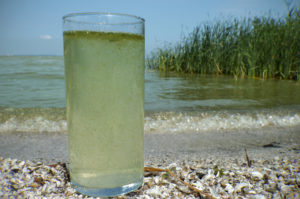
Nutrient pollution, which fuels massive toxic algae blooms, is a significant threat to the region’s drinking water, quality of life, and economic well-being. Nonpoint sources – specifically agricultural lands – are the largest contributor of the pollution causing these algal blooms. Harmful algal blooms cause annual problems, reducing recreation opportunities and impacting drinking water, in western Lake Erie and Green Bay on Lake Michigan.
We urge Congress to:
- Support farm bill programs that help limit pollutants that cause harmful algal blooms, and link federal conservation funding with measurable water quality improvements;
- Support the establishment of a total maximum daily load (TMDL), or pollution diet, for western Lake Erie;
- Fund monitoring and reporting programs to ensure pollution reduction targets are met in western Lake Erie and Green Bay; and
- Provide permanent and dedicated funding to the Land and Water Conservation Fund.
